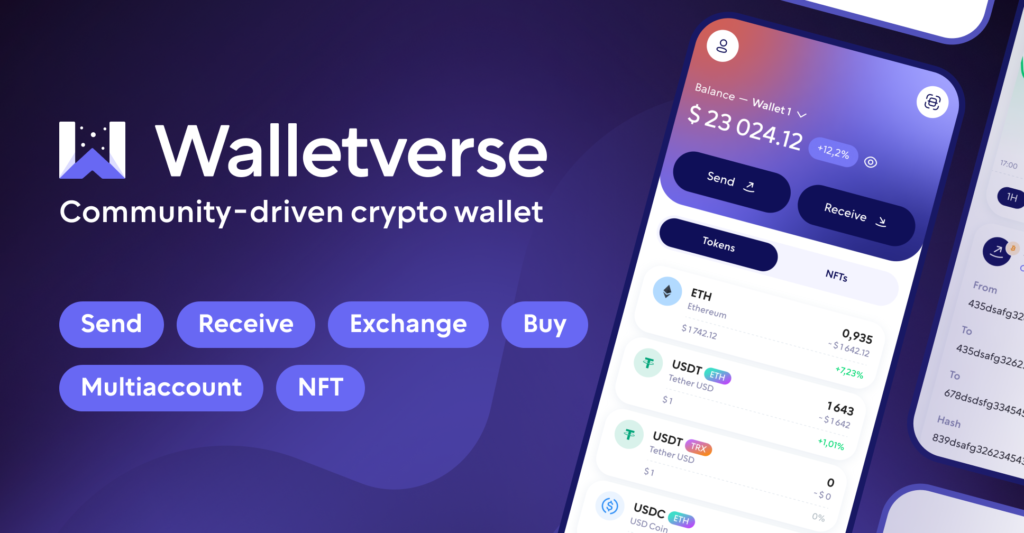How Can Someone Hack Your Crypto Wallet?
As the world of cryptocurrencies grows, so does the risk of cyberattacks. Understanding how hackers target crypto wallet vulnerabilities is key to keeping your digital assets safe. In this article, we will explore the most common methods used by hackers to steal cryptocurrency and provide insights on how to protect your cryptocurrency from hackers.
Common Crypto Wallet Security Risks
- Phishing attacks on crypto wallets.
One of the most common methods hackers use to gain access to your funds is through phishing attacks on crypto wallets. In a phishing attack, the hacker tricks you into providing sensitive information, such as your private key or wallet login credentials, by disguising themselves as a legitimate entity. This can be done via fraudulent emails, fake websites, or even social media messages.
- Private key security risks.
Your private key is the most important aspect of your cryptocurrency wallet. Hackers can gain access to your funds if they obtain this key. Weak password vulnerabilities, leaving private keys exposed online, or storing them on insecure devices can lead to theft. Always protect your private keys and never share them with anyone.
- Sim-swapping to steal crypto.
Another way hackers can gain control of your wallet is through sim-swapping, where they manipulate your phone provider to gain access to your two-factor authentication (2FA) codes. With your phone number under their control, hackers can bypass two-factor authentication and get access to your crypto accounts.
- Man-in-the-middle attacks.
In a man-in-the-middle attack, hackers intercept your communications with an exchange or wallet provider. If you’re accessing your wallet on an unsecured network, such as public Wi-Fi, your data could be intercepted and manipulated, allowing hackers to steal your information and your funds.
- Crypto wallet malware threats.
Malware is another threat to crypto wallets. Hackers can install malicious software on your device without your knowledge, giving them access to your wallet or private keys. Crypto wallet malware threats are especially dangerous because they can operate without any visible signs of infection.
- Social engineering attacks on crypto.
Hackers often use social engineering attacks to trick people into revealing sensitive information. This can include impersonating trusted contacts or creating fake support channels to convince you to share your wallet credentials.
How to Prevent Unauthorized Access to Your Crypto Wallet
- Use cold wallets for long-term storage.
The safest way to store large amounts of cryptocurrency is by using a cold wallet or hardware wallet. These wallets are kept offline, making it nearly impossible for hackers to access your funds through online attacks.
- Use biometric authentication and passcode.
For stronger security, use biometric authentication (fingerprint or face recognition) and a passcode to protect your crypto wallet. Walletverse implements both, ensuring only you can access your wallet safeguarding your funds from hackers and unauthorized access.
- Keep software updated.
Ensure your wallet software and any associated apps are always up to date. This helps protect against the latest vulnerabilities and malware threats targeting crypto wallets.
- Use strong passwords.
Avoid using weak or easily guessable passwords. A strong password combined with 2FA makes it significantly harder for hackers to carry out wallet password cracking attempts.
How Walletverse Can Keep Your Crypto Safe

When it comes to securing your crypto assets, Walletverse is designed with robust security features to keep hackers at bay. Here’s how Walletverse protects you:
- Private key control. With Walletverse, you hold the private keys, ensuring you have full control over your funds. Your private keys are encrypted and stored securely on your device.
- Passcode and biometric authentication. Walletverse integrates passcode and biometric authentication, adding a layer of security to protect against unauthorized access.
- Self-custody. Unlike exchanges, Walletverse is a self-custody wallet, meaning that only you have access to your crypto—not even our team can access your assets.
- Real-time monitoring. With real-time transaction monitoring and alerts, Walletverse allows you to identify any suspicious activity and take action quickly.
Protect your crypto assets today with Walletverse, the most secure and user-friendly crypto wallet. With support for over 600 cryptocurrencies, self-custody, and biometric authentication, Walletverse ensures your funds are always safe and accessible only to you.
Download Walletverse now from Google Play or the App Store and experience the ultimate in crypto security.
FAQ
Most frequent questions and answers
In a phishing attack, hackers impersonate a trusted entity to trick you into revealing your wallet credentials or private keys. Always verify the authenticity of emails, messages, and websites before providing any sensitive information.
Walletverse provides top-tier security with features like passcode and biometric authentication, self-custody, and cold storage options. With Walletverse, only you have access to your private keys, and your funds are protected against common hacking methods like sim-swapping and malware threats.
To avoid crypto wallet malware threats, always keep your wallet software and any associated apps up to date. Use trusted devices for accessing your wallet, and avoid downloading files or clicking on suspicious links.
If you suspect your wallet has been hacked, immediately transfer your funds to a secure wallet, such as Walletverse, which offers enhanced security features. Review all recent transactions and change your security settings, including passwords and 2FA.